London midcentury courtyard house gets a refresh by William Smalley
This midcentury courtyard house refurbishment project by William Smalley is the result of the architect’s close work with clients and the building’s original fabric

We’re seeing something of a step change in attitude towards British domestic architecture of the recent past. Whilst post-war modernism has always had its admirers, they were often outnumbered and outbid by developers and dismissive views that saw low-slung structures on spacious plots as an easy way to make big money. Luckily, this was not the case with this modest, modernist architecture courtyard house in London.
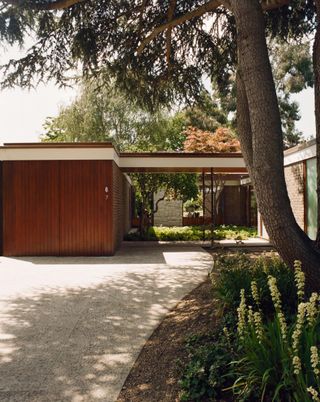
Courtyard House by William Smalley, a refurbishment in the spirit of the original architecture
Thanks to the concerted effort of bodies like the Twentieth Century Society and a new generation of more informed and engaged planners, many of the neglected gems of the era have come firmly back into fashion.
For homeowners who indulge in the midcentury mood, the next challenge is to find an architect willing to sublimate their own ego in favour of a sensitive and low-key approach.
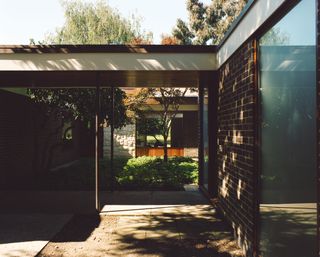
The house is arranged around two courtyards
Case study: a London midcentury courtyard house
This refurbishment in south-west London ticks all the boxes. The original house was built to exacting standards by the architect Leslie Gooday in 1958, one of a small group of new structures that drew on the openness of the American Case Study Houses, spliced with the new spirit of optimism in British design.
There’s still a hint of Californian culture in these generous open-planned spaces, even if the British climate rarely maximises the indoor-outdoor lifestyle.
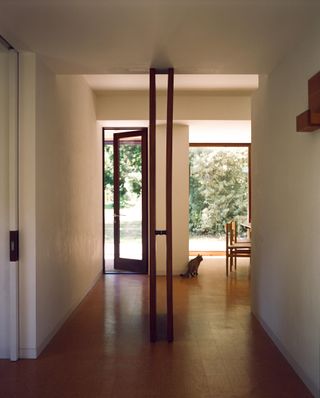
New glazing and a cork floor unite the interior
Cut to today, and the house was a venerable survivor, albeit deeply embedded in an overgrown landscape.
Smalley was commissioned by the owner – a previous client – to upgrade it for the modern era. As well as stripping out asbestos and upgrading the roof, the refurbishment saw whole swathes of the fabric seamlessly replaced.
Wallpaper* Newsletter
Receive our daily digest of inspiration, escapism and design stories from around the world direct to your inbox.
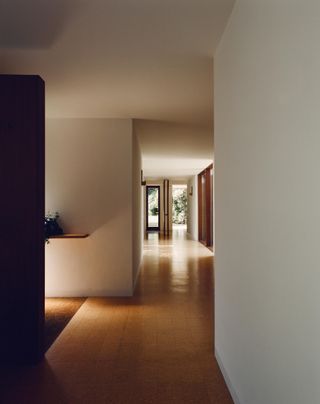
A long corridor runs through the spine of the house
The project added double-glazing and insulation throughout, carefully matched to the original proportions.
The two internal courtyards are separated by a glazed corridor and covered walkway, providing a sense of changing space as one moves through the house from living area to bedrooms.
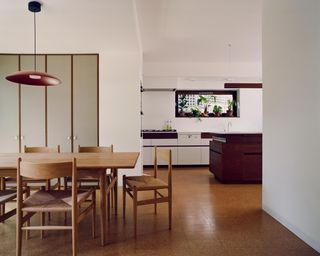
The dining chairs and table are by Hans Wegner for Carl Hansen & Søn, the pendant light is ‘HeadHat Plate’ by Santa & Cole
Smalley and his team created several bespoke pieces of furniture, including benches, lights, and the kitchen units, which are paired with classic pieces by Hans Wegner, Mies van der Rohe, and Alvar Aalto. The client also commissioned new wall-hangings from the textile designer Catarina Riccabona.
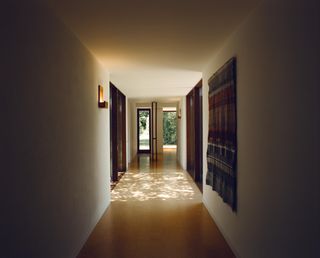
Bespoke wall-hangings in the main corridor
The refurbishment work also included the creation of a new second floor, carefully negotiated with the planners, reached by a top-lit staircase and housing a dark linen-lined master bedroom, with a cinematic view of the green surroundings.
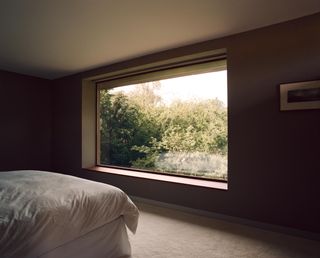
The main bedroom, with its dark linen walls
Downstairs, the kitchen was expanded, and a new bedroom added, with floors re-laid with new cork floor tiles to create a uniform sense of space.
‘The house has an openness, retaining the optimism of the modernist era it was built in,’ says Smalley, ‘It is an incredibly nice house to be in.’
Jonathan Bell has written for Wallpaper* magazine since 1999, covering everything from architecture and transport design to books, tech and graphic design. He is now the magazine’s Transport and Technology Editor. Jonathan has written and edited 15 books, including Concept Car Design, 21st Century House, and The New Modern House. He is also the host of Wallpaper’s first podcast.
-
 This year's best luxury Christmas hampers for festive celebrations
This year's best luxury Christmas hampers for festive celebrationsThe best Christmas hampers are a classic gift for a reason: everyone loves receiving a basket of beautifully curated pantry fillers just in time for the festivities. Here are our top picks for 2024
By Rosie Conroy Published
-
 17 questions for Michael Kiwanuka
17 questions for Michael KiwanukaAs he prepares to release his fourth album 'Small Changes', we ask Michael Kiwanuka some of life's important questions
By Charlotte Gunn Published
-
 Inside ‘M&OTHERS’, the experimental exhibition dissecting the relationship between fashion and motherhood
Inside ‘M&OTHERS’, the experimental exhibition dissecting the relationship between fashion and motherhoodA new exhibition at Modemuseum Hasselt, Belgium explores the rarely examined link between fashion and motherhood, in all its forms
By Dal Chodha Published
-
 A Peckham house design unlocks a spatial puzzle in south London
A Peckham house design unlocks a spatial puzzle in south LondonAudacious details, subtle colours and a product designer for a client make this Peckham house conversion a unique spatial experience
By Jonathan Bell Published
-
 Squire & Partners' radical restructure: 'There are a lot of different ways up the firm to partnership'
Squire & Partners' radical restructure: 'There are a lot of different ways up the firm to partnership'Squire & Partners announces a radical restructure; we talk to the late founder Michael Squire's son, senior partner Henry Squire, about the practice's new senior leadership group, its next steps and how architecture can move on from 'single leader culture'
By Ellie Stathaki Published
-
 Meet the 2024 Royal Academy Dorfman Prize winner: Livyj Bereh from Ukraine
Meet the 2024 Royal Academy Dorfman Prize winner: Livyj Bereh from UkraineThe 2024 Royal Academy Dorfman Prize winner has been crowned: congratulations to architecture collective Livyj Bereh from Ukraine, praised for its rebuilding efforts during the ongoing war in the country
By Ellie Stathaki Published
-
 RIBA House of the Year 2024: browse the shortlist and pick your favourite
RIBA House of the Year 2024: browse the shortlist and pick your favouriteThe RIBA House of the Year 2024 shortlist is out, celebrating homes across the UK: it's time to place your bets. Which will win the top gong?
By Ellie Stathaki Published
-
 The new Canada Water boardwalk is an experience designed to ‘unfold slowly’
The new Canada Water boardwalk is an experience designed to ‘unfold slowly’A new Canada Water bridge by Asif Khan acts as a feature boardwalk for the London area's town centre, currently under development, embracing nature and wildlife along the way
By Ellie Stathaki Published
-
 Tour this Bel Vista house by Albert Frey, restored to its former glory in Palm Springs
Tour this Bel Vista house by Albert Frey, restored to its former glory in Palm SpringsAn Albert Frey Bel Vista house has been restored and praised for its revival - just in time for the 2025 Palm Springs Modernism Week Preview
By Hadani Ditmars Published
-
 The Museum of Shakespeare set to open in east London
The Museum of Shakespeare set to open in east LondonThe Museum of Shakespeare puts the remains of the ancient Curtain Playhouse at the centre of 'The Stage', a new urban development in the heart of Shoreditch
By Smilian Cibic Published
-
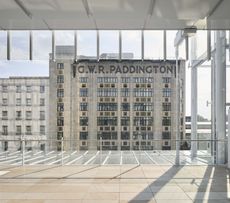 Paddington Square transforms its patch of central London with its 'elevated cube'
Paddington Square transforms its patch of central London with its 'elevated cube'Paddington Square by Renzo Piano Building Workshop has been completed, elevating a busy London site through sustainability, modern workspace and a plaza
By Ellie Stathaki Published